
What is a small space without its own garden? You might wonder how to transform a limited area into a welcoming retreat. With some smart strategies, it’s completely achievable.
Your tiny yard can become a peaceful getaway with plants, charming decor, and clever layouts. How? Start by thinking creatively. Exploit vertical space, include comfortable seating, and select plants that flourish in small areas. A tiny garden can brighten any corner.
Small spaces need grand ideas! Consider your garden a canvas for your botanical dreams.
Vertical gardens, hanging planters, and compact tables optimize every inch. Add a bench, fairy lights, or a bird feeder for a serene atmosphere.
Ready to transform your small space into a green paradise? Let’s explore simple, innovative ways to make it happen. Begin today and watch your garden thrive!
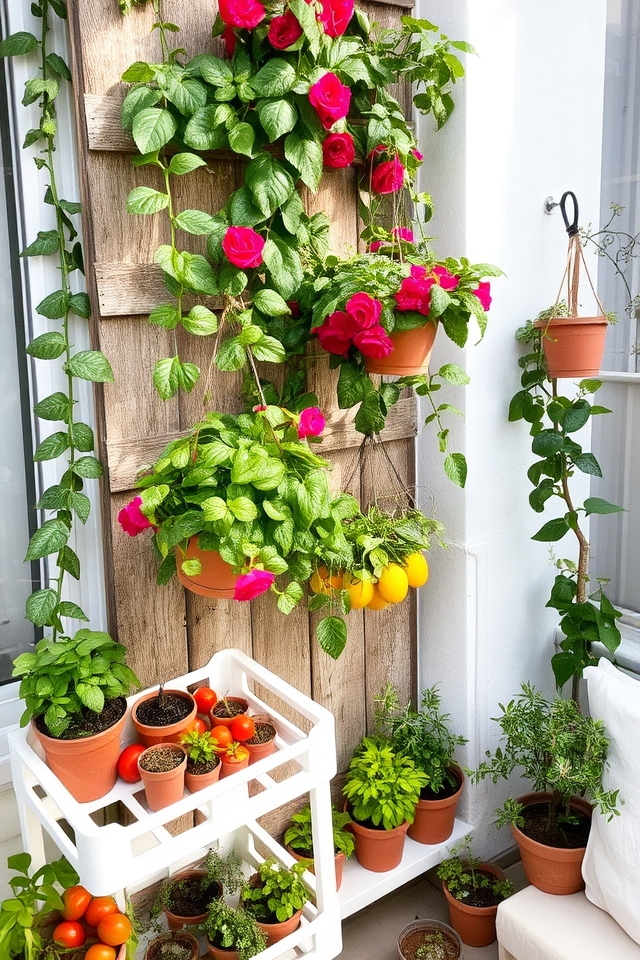
Vertical gardening uses trellises, wall planters, and stacked shelves to maximize small spaces. Grow herbs, vegetables, or ornamentals upwards using climbing plants, hanging baskets, or shelf systems. This saves ground space, improves aesthetics, and enhances air flow. Choose lightweight containers and suitable plants for optimal growth. It’s perfect for urban areas or limited outdoor spaces.
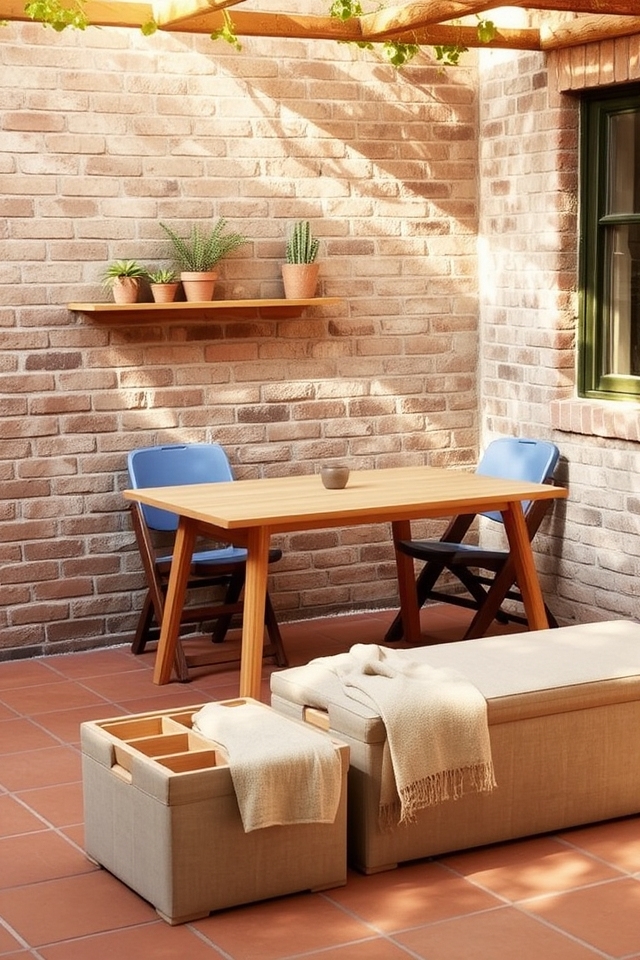
Choose foldable, convertible, or wall-mounted furniture to maximize small garden areas. Ottomans with storage, nesting tables, and stackable chairs minimize clutter. Vertical options like hanging seats or shelf units add function. Select lightweight, compact pieces that combine style and utility, providing flexibility. Focus on designs that offer storage or transform to suit limited spaces.
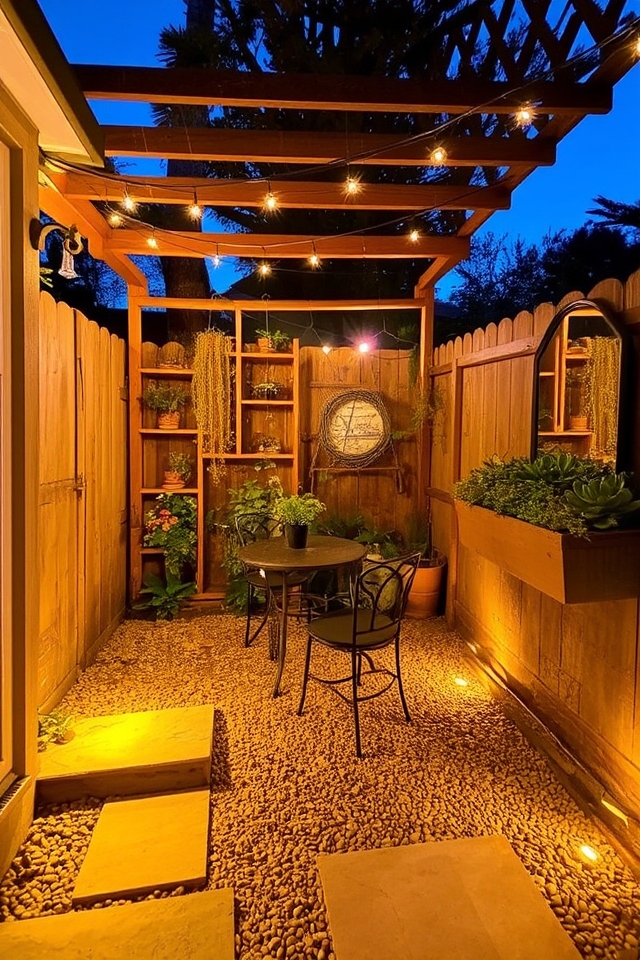
Solar path lights, wall brackets, and recessed fixtures save space while enhancing the mood. String lights above seating or along fences add warmth without bulk. LED strips under shelves or in planters offer subtle light. Mirrors increase light reflection, creating a sense of space. Small, adjustable spotlights highlight features like sculptures or plants.

Select containers with drainage holes to prevent root issues. Use lightweight potting mix and choose plants suited to your space’s sunlight. Combine tall and compact plants for vertical interest. Water regularly, ensuring containers don’t dry out. Use hanging baskets or wall planters to maximize limited areas. Prune and fertilize regularly to keep plants healthy and attractive.
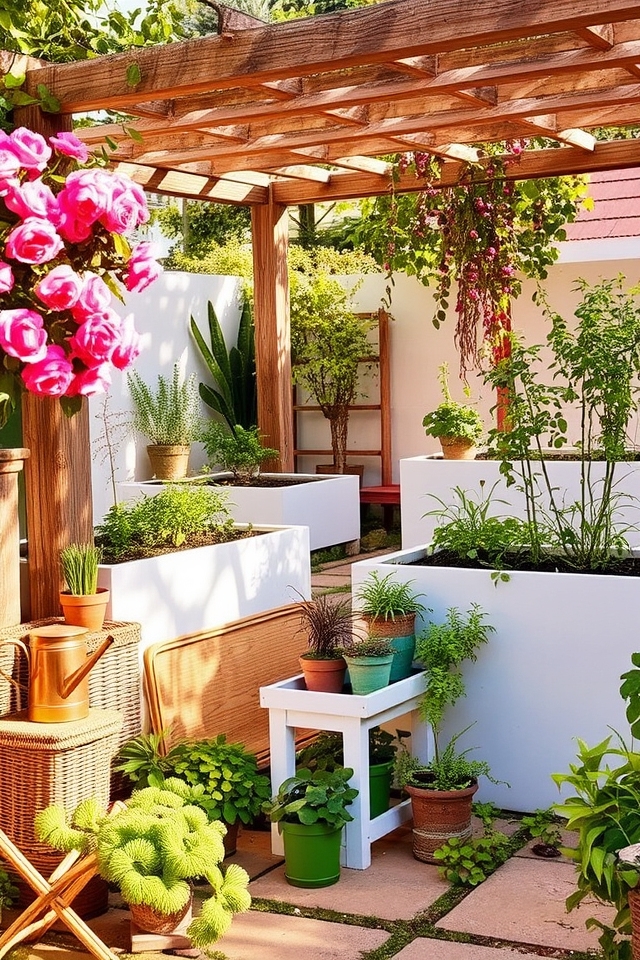
Multi-functional garden structures combine practicality and beauty in small spaces. Trellises serve as privacy screens and plant supports, while raised beds offer gardening and storage. Pergolas provide shade and vertical growing space. Foldable furniture switches between seating and planting. Modular units adapt to changing needs, improving both function and appearance.
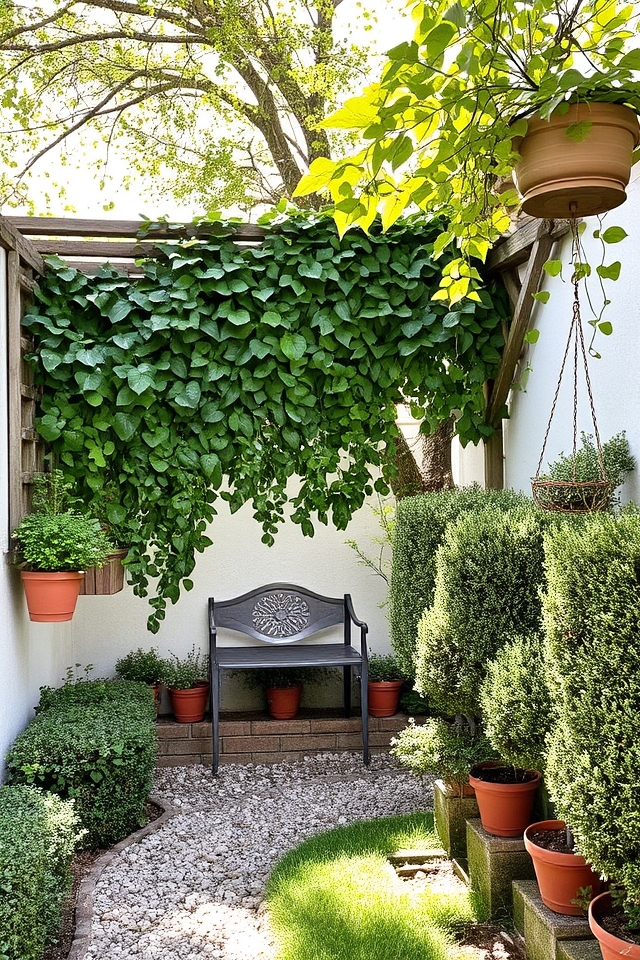
Use vertical space with trellises, wall planters, or hanging baskets to maximize light. Choose light colors and reflective materials to increase brightness. Prune plants regularly to improve airflow and prevent overcrowding. Position taller plants carefully to avoid shading smaller ones. Add open pathways and staggered planting to improve circulation. Avoid dense foliage for good ventilation and sunlight.
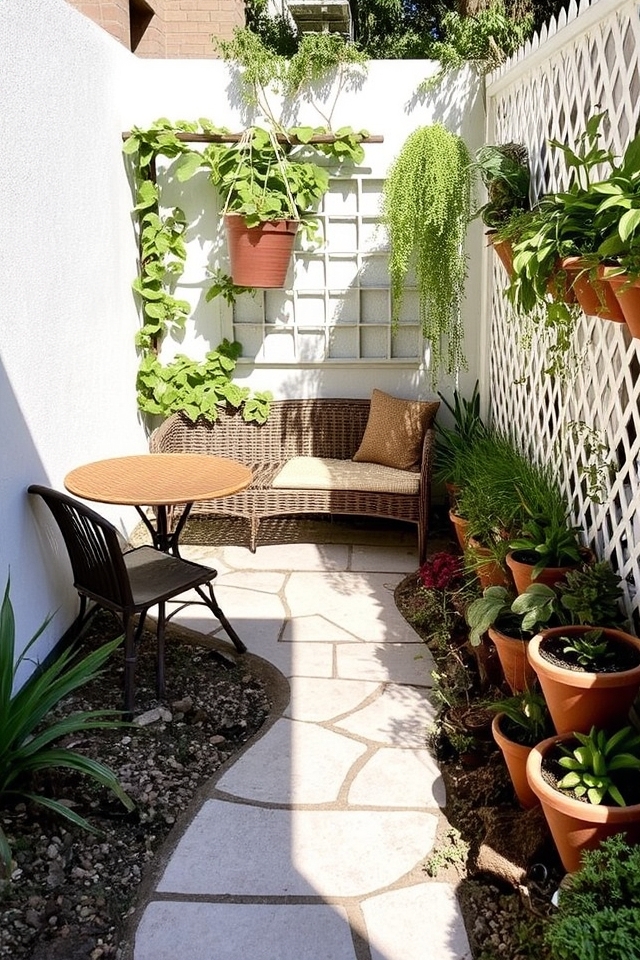
Strategic layouts maximize small outdoor areas through zoning, vertical gardening, and multi-functional furniture. Define areas for dining, relaxing, and greenery using paths or planters. Use vertical space with trellises, wall planters, or hanging gardens. Choose light, reflective materials to enhance the sense of space. Arrange furniture to encourage flow, avoiding clutter. Use layered plantings and compact fixtures for efficiency. Prioritize access and visual depth for an organized, inviting space.
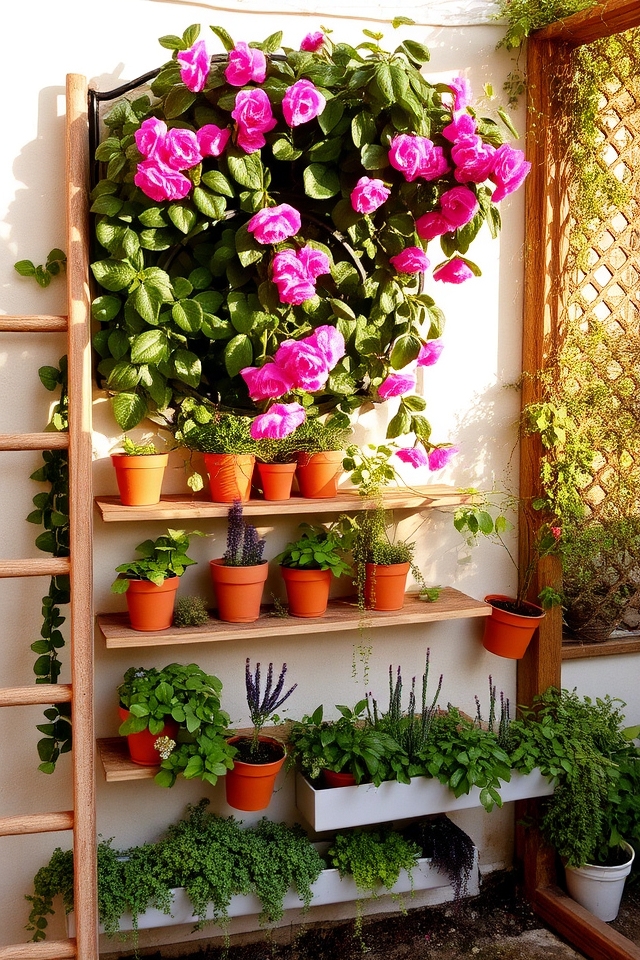
Maximize vertical wall space in small gardens with trellises, wall planters, and hanging baskets. Climbing plants like ivy or beans add greenery while saving space. Pots with herbs or succulents on shelves create layers. Use lightweight materials for easy setup. This improves aesthetics, enhances airflow, and optimizes limited space for diverse plants.
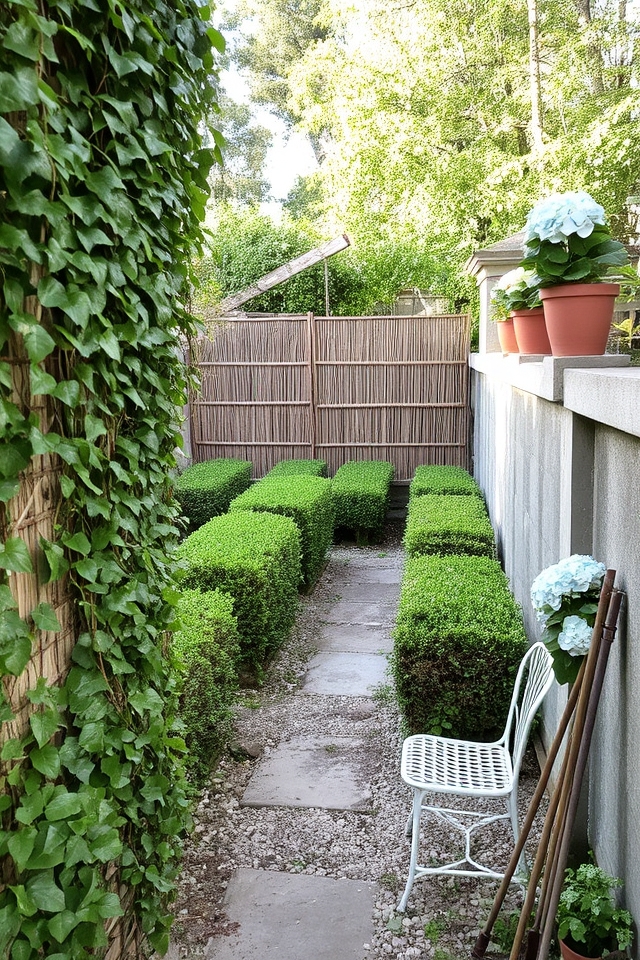
Create privacy in small gardens using vertical solutions like trellises, lattice panels, or climbing plants like ivy. Use compact hedges or bamboo screens to define areas. Use fences with gaps for airflow or decorative touches. Add potted plants along borders to block views without wasting space. Choose privacy-enhancing plants like boxwood or hydrangea for dense coverage.
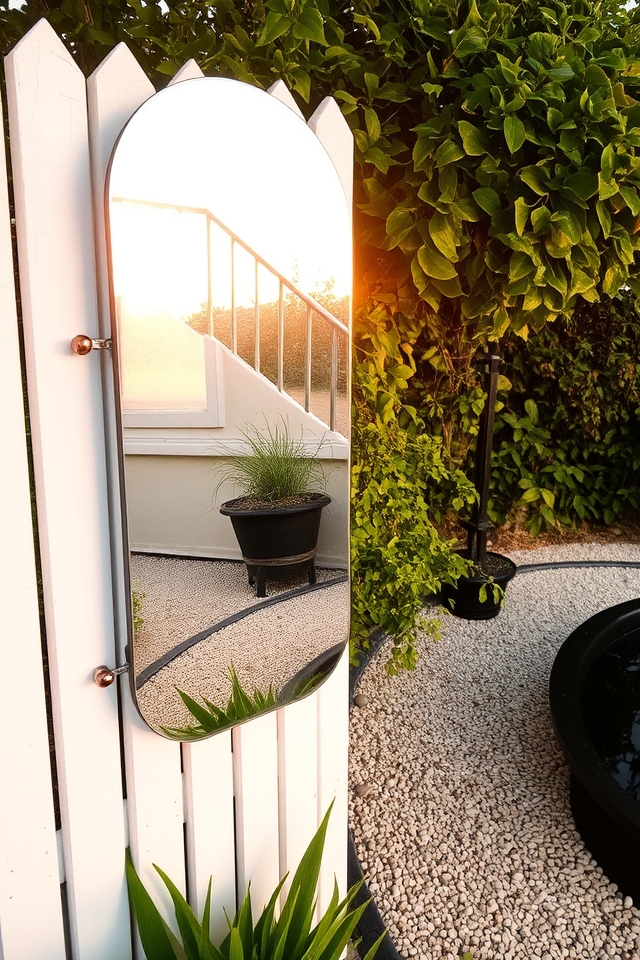
Reflective surfaces improve lighting in small gardens by bouncing natural light. Use mirrors, polished metals, or light-colored stones to increase brightness. Place them opposite windows or in shaded areas to maximize light. Water features with glossy surfaces also reflect light, creating a bright, open feel. These reduce shadows, improve visibility, and visually expand the space. Choose materials that match the garden’s style for a cohesive, bright design.
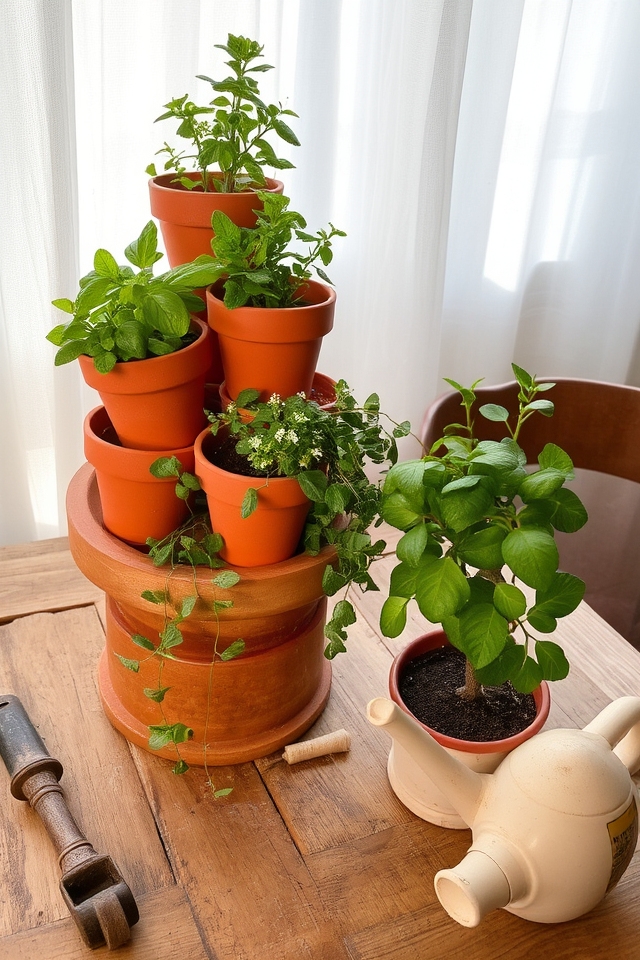
Compact plant choices for tiny gardens include herbs like basil, thyme, and mint, which thrive in small pots. Succulents like echeveria and sedum offer low-maintenance, drought-tolerant options. Dwarf fruit trees, compact vegetables like cherry tomatoes, and trailing plants like ivy or pothos maximize vertical space. Select varieties bred for small areas, ensuring enough light and efficient watering for optimal growth.
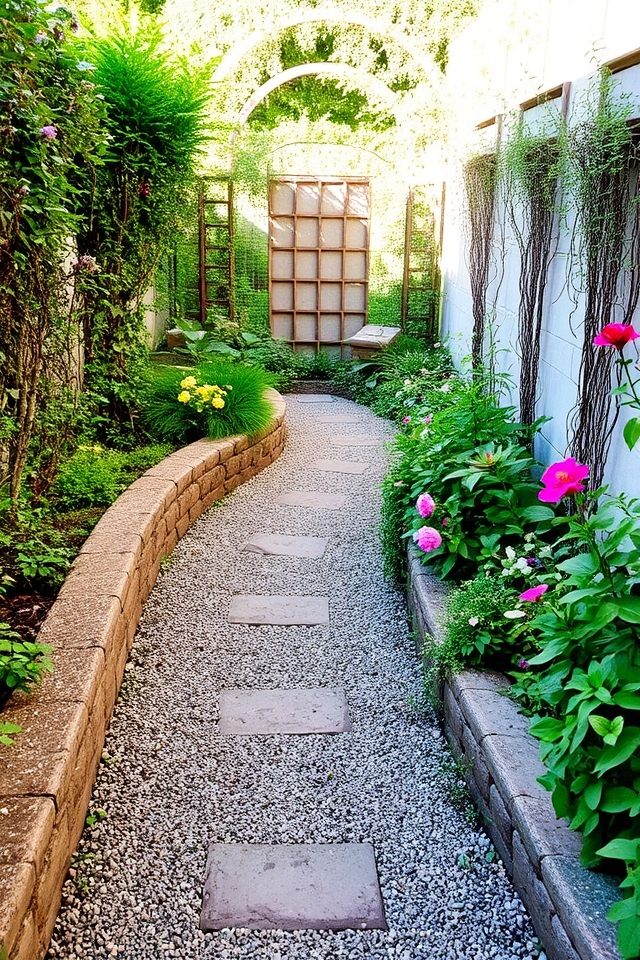
Narrow, winding paths maximize space while guiding movement. Use permeable materials like gravel or stepping stones to reduce visual weight. Align paths with planting beds for a smooth look. Curved designs create depth, avoiding straight lines that narrow the view. Edging with low walls or plants defines paths without taking up space. Prioritize access with 24-30 inch widths. Vertical elements like trellises or hanging planters keep paths clear.
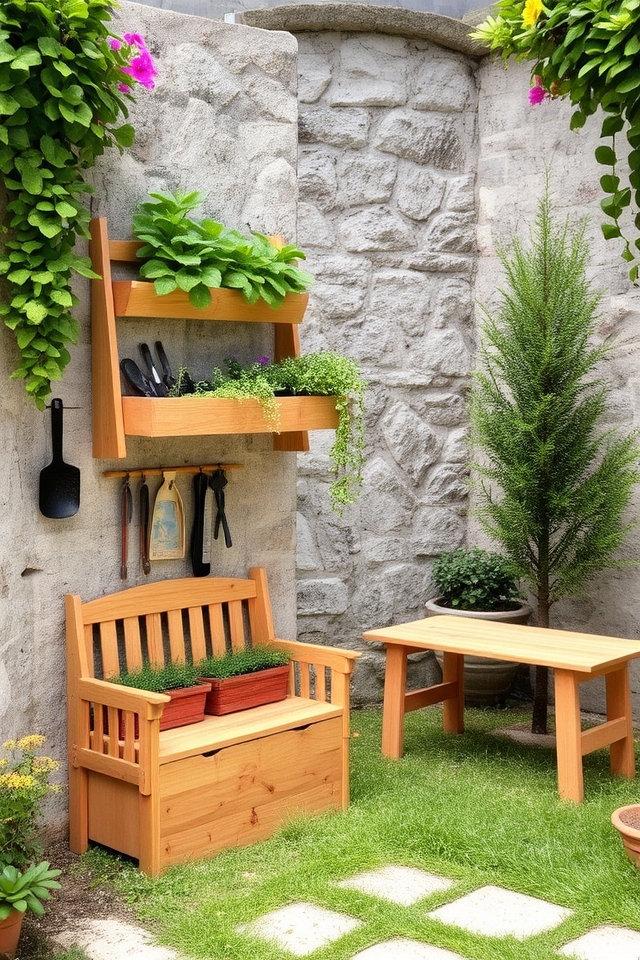
Smart storage is key in small gardens. Use vertical space with wall planters and shelves. Consider hidden storage benches and ottomans for tools and accessories. Multifunctional furniture, like a storage bench with a planter, helps maximize space and keep the garden tidy.
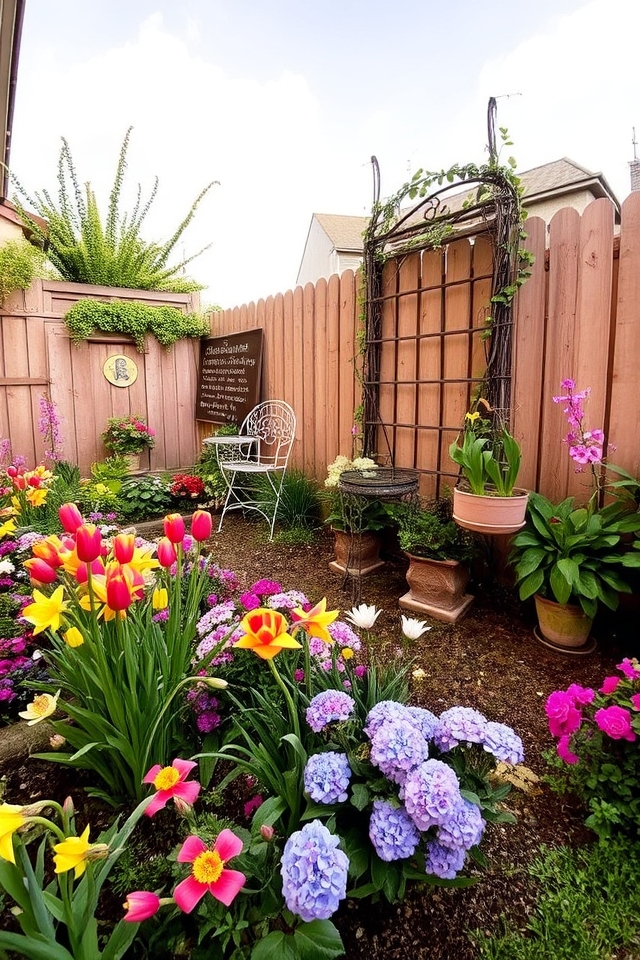
Seasonal changes refresh small garden spaces by adding rotating plant displays, updating decor, and rearranging furniture. This adds visual interest and a sense of renewal, making the most of the limited space all year.
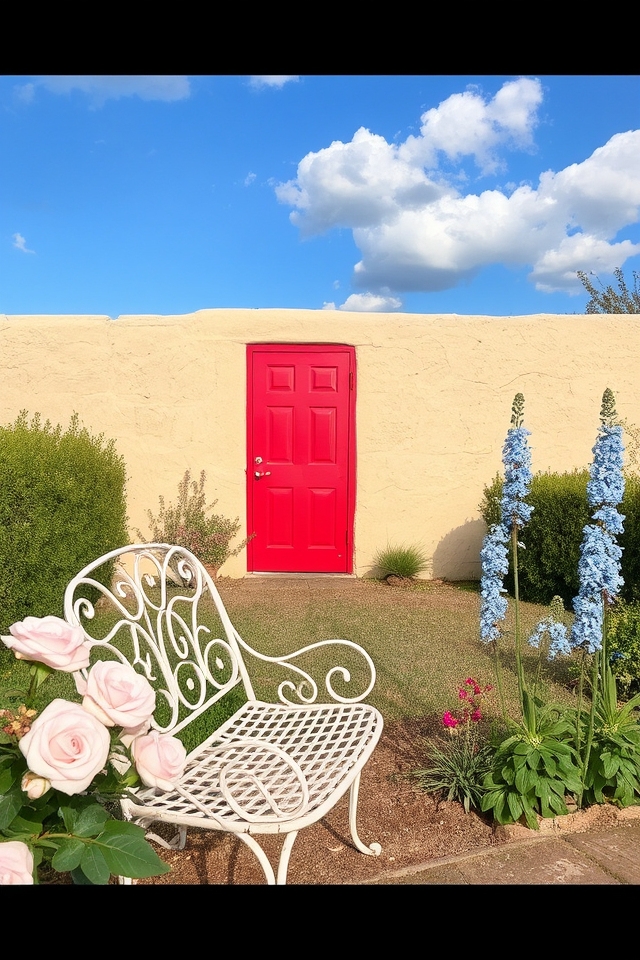
Bright colors can make small gardens seem larger. Soft pastels and whites create calm, while bold colors highlight focal points. Monochromatic schemes can also enhance space by creating a unified look, connecting different elements.
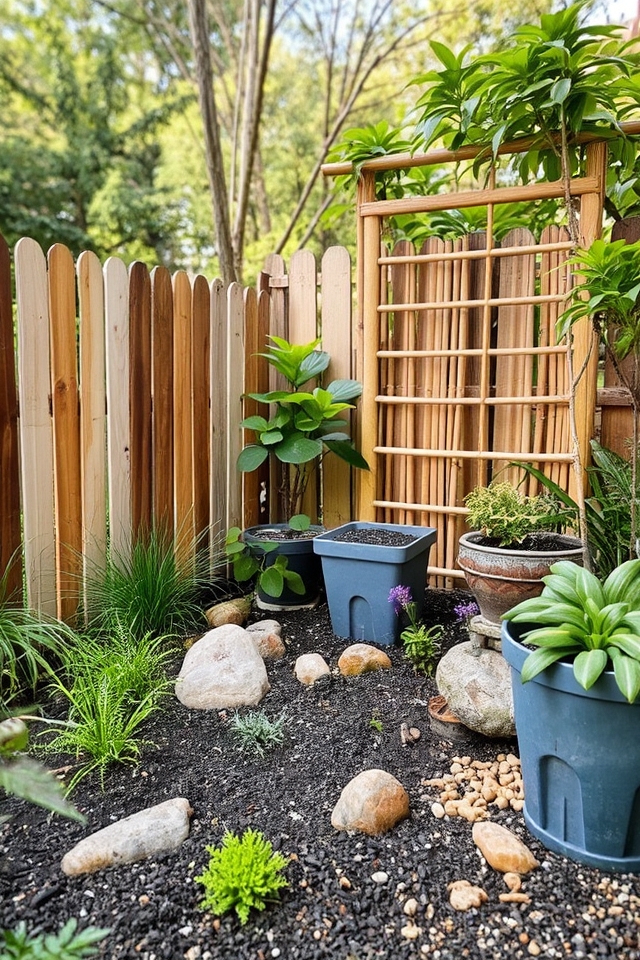
Eco-friendly materials for small garden projects include reclaimed wood, bamboo, and recycled plastic. These reduce waste and environmental impact. Natural stones and low-maintenance plants are also great, promoting a healthy ecosystem and saving resources. They add a unique touch while supporting the environment.
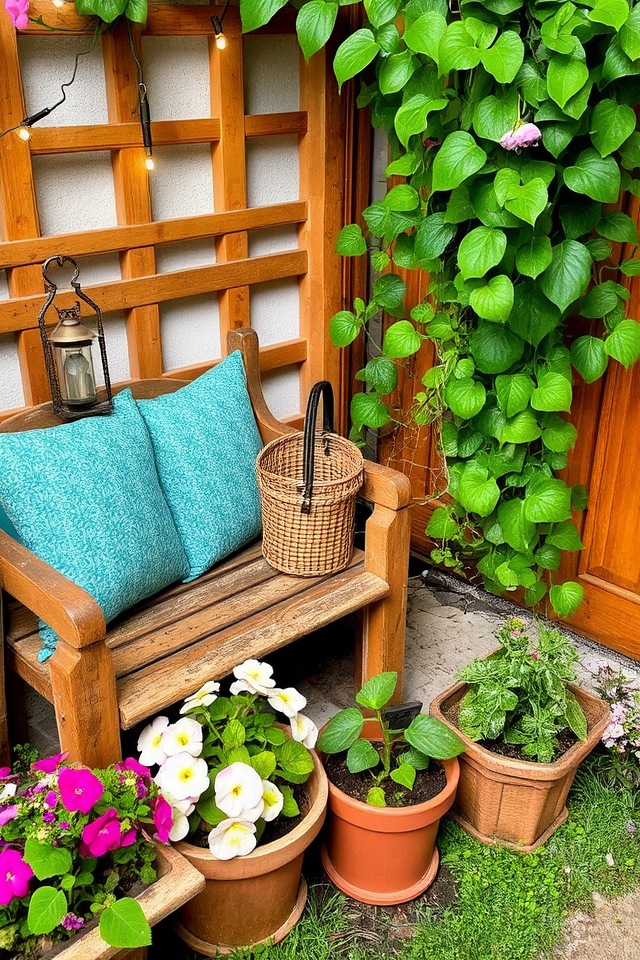
Personalized touches make small gardens feel like home, such as adding decorative items, vibrant flowers, and unique furniture that reflect your style, creating a cozy atmosphere and a sense of belonging.
You’ll feel right at home in your cozy garden oasis. With these 17 design ideas, you’ll maximize your small space easily. Embrace vertical gardening and multi-functional furniture to create a peaceful retreat. Get creative and make your tiny garden a relaxing haven that’s totally stylish.

Don't let aphids, slugs, and caterpillars ruin another plant. Take back control with simple, natural methods that actually work.